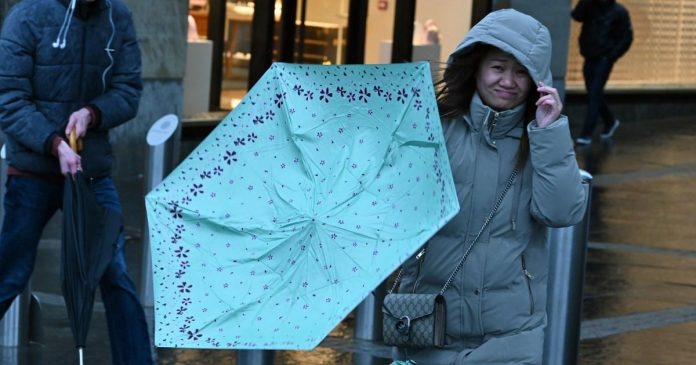The UK’s spring in 2024 has been a complete washout, with constant rainfall and freezing temperatures. It’s been so bad that people are still having to use their heating in April. However, as miserable as it may be, it could be worse. Back in 1816, the British had no spring or summer at all, and they had a volcano on the other side of the world to blame for it.
On April 10, 1815, Mount Tambora, located on the island of Sumbawa in Indonesia, erupted with an unprecedented force. This eruption was the largest one in living memory, with a volcanic explosivity index of seven. The eruption was catastrophic, with a massive column of ash shooting into the sky and lava flowing for hours. Pyroclastic flows also raced down the mountain, wiping out entire villages and triggering devastating tsunamis when they reached the sea.
The aftermath of this geological onslaught was unimaginable. More than 70,000 people lost their lives, making it the deadliest volcanic eruption in history. What made it even more impactful was the amount of sulphur ejected into the atmosphere. Tambora released 60 megatons of sulphur, which mixed with water vapor to form sulphate aerosols in the stratosphere. These aerosols had the opposite effect of trapping heat, instead reflecting sunlight and preventing it from reaching the surface.
So, while the UK’s spring in 2024 may be disappointing, it’s nothing compared to the year without a summer that the British experienced in 1816. The eruption of Mount Tambora had global consequences, causing a significant drop in temperatures and affecting weather patterns around the world.
SUMMER OF 1816: THE YEAR WITHOUT A SUMMER
In a shocking turn of events, the summer of 1816 was completely stolen by a mysterious phenomenon. A year after the eruption of Krakatau in Indonesia, particles had spread across the globe, causing chaos. The effects were felt far and wide, with even the United States experiencing heavy snowfall in June. Astonishingly, snow drifts reached a staggering 20 inches, leaving the Northeast covered in a blanket of white.
The New England Historical Society reported a bizarre occurrence during this unprecedented snowfall. Frozen birds dropped dead from the sky, while sheep, already shorn, succumbed to exposure. Farmers desperately attempted to tie their fleeces back on, but it was all in vain. As if things couldn’t get any worse, periodic frosts destroyed many crops throughout the summer. Desperate times called for desperate measures, and people resorted to eating raccoons, pigeons, and even hedgehogs just to survive.
The situation was dire not only in the United States but also in Europe. While the summer of 1816 was bitterly cold, it was also unusually wet in certain areas. Weeks of rain plagued some regions, while central Spain witnessed the rare occurrence of snowfall in July. Meanwhile, Britain experienced its coldest July on record, with snowfall covering the entire country. To make matters worse, two-inch hailstones shattered windows, adding to the misery.
As the food shortage intensified, rioting and migrations became rampant. The failed harvest during this time is often referred to as the ‘last great subsistence crisis in the Western World’. Malnourishment became a major concern, leading to a devastating typhus epidemic that swept across parts of Europe, including Ireland and Scotland.
The affected population had no idea that the cause of their misery lay half a world away. Even today, scientists are still investigating the connection between the volcanic eruption and the subsequent changes in global climate. This historical event serves as a stark reminder of the far-reaching effects of a supervolcano explosion. It sets off a chain reaction of unintended consequences that can span the entire world and endure through time.
However, amidst the gloomy weather, there was a silver lining. Mary Shelley, confined indoors due to the abysmal conditions, found inspiration and penned the iconic novel Frankenstein while traveling in Switzerland. Her creation, the infamous monster, has outlived the catastrophic effects of the eruption, leaving a lasting impact on literature and popular culture.

